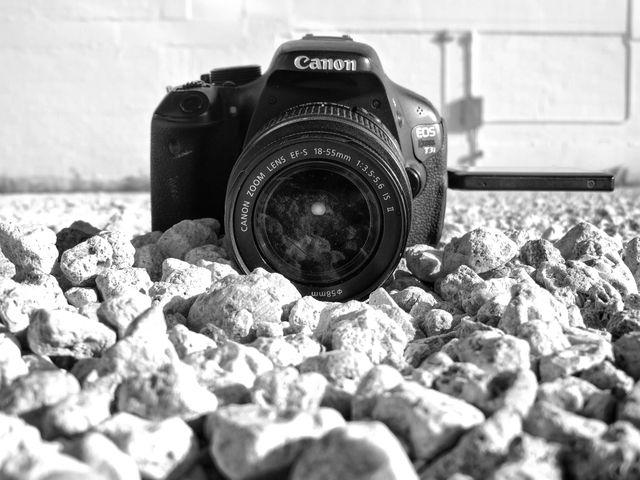Tips for Photographing Children

Photographing children can be one of the most rewarding experiences for a photographer. Their spontaneous nature, expressive faces, and boundless energy present unique opportunities to capture truly memorable images. However, it also comes with its own set of challenges. To help you capture the true spirit of children in your photos, here are some essential tips to guide you:
1. Get on Their Level
One of the most effective ways to capture genuine expressions and emotions is to get down to the child’s level. This approach not only creates a more intimate perspective but also allows you to connect with the child in a way that makes the photo feel more personal. Kneel, lie down, or sit, depending on the child’s height and the scene you’re trying to capture. By seeing the world from their perspective, you’ll be able to frame shots that are more engaging and true to their experience. If you need any additional tips and ideas about the beginner film camera, you can visit their page to learn more.
2. Be Patient and Flexible
Children are notoriously unpredictable, and their moods can shift quickly. Patience is crucial when photographing them. Allow them to take breaks, and don’t rush the process. Sometimes, the best photos come when you least expect them, so remain flexible and ready to capture those spontaneous moments. If a planned shot isn’t working out, be prepared to adapt your approach.
3. Use Natural Light
Natural light is often the most flattering for children’s photography. It creates a soft, gentle look that highlights their natural beauty without harsh shadows. Aim to shoot during the golden hour, which is the hour after sunrise and before sunset, for the best results. If you’re indoors, position your subject near a window where the light is diffused. Avoid using direct flash, as it can create unflattering shadows and disrupt the child’s natural expressions.
4. Engage and Interact
Engaging with children and making them feel comfortable can lead to more authentic and relaxed photographs. Spend a few minutes talking to them, playing a game, or showing them a toy. Building rapport helps them feel at ease and more likely to show their true personality. Use humor and gentle encouragement to elicit natural expressions and smiles.
5. Focus on Details
Children’s features and expressions are often best captured in close-up shots. Don’t forget to focus on the small details—tiny hands, expressive eyes, or a joyful smile. These details can tell a powerful story and highlight the unique aspects of the child’s personality. Close-up shots also help in creating more intimate and emotionally impactful images.
6. Incorporate Their Interests
Involving children’s interests in the photo session can make the experience more enjoyable and lead to more genuine results. If a child loves dinosaurs, incorporating dinosaur toys or themed clothing can make the session more engaging for them. Allow their interests to guide the session and include elements that reflect who they are.
7. Capture Candid Moments
While posed portraits have their place, candid shots often capture the most genuine moments. Look for opportunities to photograph children in their natural environment, whether they’re playing, laughing, or interacting with family members. These unscripted moments often showcase their true spirit and create lasting memories.
8. Use a Fast Shutter Speed
Children move quickly and unpredictably, so using a fast shutter speed is essential to capture sharp images. A shutter speed of at least 1/500th of a second is a good starting point, but you may need to adjust based on the child’s movement and lighting conditions. A faster shutter speed helps freeze motion and prevent blurry images, ensuring you capture the excitement of their movements.
9. Embrace Imperfections
Children are full of imperfections, and that’s part of what makes them so endearing. Embrace their quirks and natural flaws, rather than striving for perfect, posed images. These imperfections often add character and authenticity to the photographs, making them more memorable and true to life.

10. Be Prepared for Messiness
Children, especially younger ones, can be messy. Whether it’s from eating, playing, or exploring, messes are part of their world. Instead of trying to avoid them, consider incorporating them into your photos. A child covered in paint or mud can make for a dynamic and expressive image that tells a story of creativity and play.
11. Involve Family Members
Family dynamics play a significant role in a child’s life, and including family members in the photos can add depth and context. Capturing interactions between the child and their parents, siblings, or extended family can create heartfelt and meaningful images. These moments can also provide a sense of connection and togetherness in your photographs.
12. Experiment with Different Angles
To capture a child’s true spirit, try experimenting with various angles and compositions. Shoot from above, below, or from the side to add variety and interest to your photos. Different angles can highlight different aspects of the child’s personality and create more dynamic and engaging images.
13. Be Respectful and Attentive
Always respect the child’s boundaries and comfort level. If a child isn’t in the mood for photos, it’s best to take a break and try again later. Forcing a child into a photo can result in forced smiles and unnatural poses. By being attentive to their needs and feelings, you’ll create a more positive experience and capture more authentic moments.
Conclusion
Photographing children is a delightful and challenging endeavor that requires a combination of patience, creativity, and technical skill. By getting on their level, using natural light, engaging with them, and embracing their unique traits, you can capture images that truly reflect their spirit and personality. Remember to be flexible, patient, and respectful throughout the process, and you’ll create photographs that are not only beautiful but also meaningful and memorable.


 The Psychology of Branding
The Psychology of Branding  Nosboss Cream Chargers for Melbourne Customers
Nosboss Cream Chargers for Melbourne Customers  How to Use Your Air Conditioner
How to Use Your Air Conditioner  Yemeni Language in Preserving Cultural Heritage
Yemeni Language in Preserving Cultural Heritage  Running Seasonal Advertising Campaigns
Running Seasonal Advertising Campaigns  Omega-3 for Reducing the Risk of Stroke
Omega-3 for Reducing the Risk of Stroke